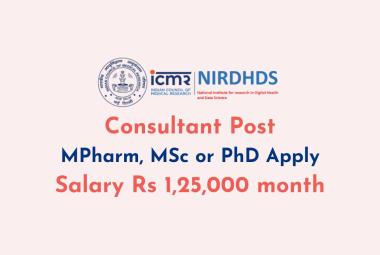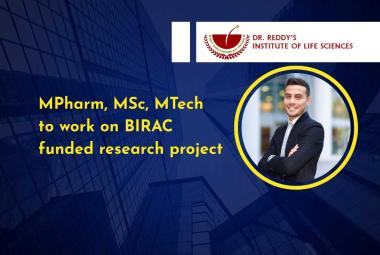{ DOWNLOAD AS PDF }
ABOUT AUTHORS:
Pratyush Kumar Das1, Shilpa Das1, Debasish Sahoo2, Jikasmita Dalei2, V.Madhav Rao2, Sunakar Nayak2, Swadhin Palo3
1Centre of Biotechnology, Siksha O Anusandhan University, Bhubaneswar, Odisha, India.
2Nitza Biologicals (P.) Ltd.Chandra Towers, Near Fortune Honda Showroom, Neredmet 'X' Road, Secundrabad, Andhra Pradesh, India.
3Roland Institute of Pharmaceutical Sciences, Berhampur, Odisha, India.
onlypratyush11@gmail.com
ABSTRACT:
Polymyxin B and Cerexin A are two polypeptide antibiotics, the first one discovered and incorporated quite earlier and the later one has still not been used in clinical trials for its high cytotoxic nature. Although Polymyxin was discovered very earlier but in the mid-way for some time it had lost its importance and was not used frequently due to its narrow spectra of action that only acts on gram negative microbes and because of its toxicity level. But with several new resistant gram negative microbes coming into the limelight responsible for causing many infections, Polymyxin B (the least toxic of all Polymyxins) has again been started to be used in pharmaceutical formulations and drugs. In this project, both Bacillus polymyxa and Bacillus cereus responsible for production of Polymyxin B and Cerexin A respectively were isolated from the rhizosphere of grass and cultured in the lab. They were confirmed by biochemical tests and then used to produce the corresponding antibiotics by submerged fermentation. The crude antibiotic thus obtained were purified by various methods like adsorption through activated charcoal, acetone precipitation, dialysis, Ion Exchange and Sephadex column chromatography and the results were compared to find the best possible way to purify the antibiotics keeping in mind that they show the maximum activity as possible on a lab scale. Further work on Cerexin A was not possible due to the unavailability of its standard solution. Work was carried out for quantitative estimation of purified and crude Polymyxin B by performing spectrophotometric assay against standard polymyxin.
REFERENCE ID: PHARMATUTOR-ART-2224
|
PharmaTutor (ISSN: 2347 - 7881) Volume 2, Issue 8 Received On: 08/06/2014; Accepted On: 13/06/2014; Published On: 01/08/2014 How to cite this article: PK Das, S Das, D Sahoo, J Dalei, VM Rao, S Nayak, S Palo; Comparative Evaluation of Purification Methods for Production of Polypeptide Antibiotics – “Polymyxin B” and “Cerexin A” from Bacillus Species; PharmaTutor; 2014; 2(8); 188-200 |
INTRODUCTION:
An antibacterial is a compound or substance that kills or slows down the growth of bacteria. The term is often used synonymously with the term antibiotic(s); today, however, with increased knowledge of the causative agents of various infectious diseases, antibiotic(s) has come to denote a broader range of antimicrobial compounds, including antifungal and other compounds[1].
The term antibiotic was coined by Selman Waksman in 1942 to describe any substance produced by a microorganism that is antagonistic to the growth of other microorganisms in high dilution. This definition excluded substances that kill bacteria, but are not produced by microorganisms (such as gastric juices and hydrogen peroxide). It also excluded synthetic antibacterial compounds such as the sulfonamides. Many antibacterial compounds are relatively small molecules with a molecular weight of less than 2000 atomic mass units[2].
Antibiotics are extremely important in medicine, but unfortunately bacteria are capable of developing resistance to them. Antibiotic-resistant bacteria are germs that are not killed by commonly used antibiotics. When bacteria are exposed to the same antibiotics over and over, the bacteria can change and are no longer affected by the drug. The problem of antibiotic resistance is worsened when antibiotics are used to treat disorders in which they have no efficacy (e.g. antibiotics are not effective against infections caused by viruses), and when they are used widely as prophylaxis rather than treatment. Resistance to antibiotics poses a serious and growing problem, because some infectious diseases are becoming more difficult to treat[3].
Resistant bacteria do not respond to the antibiotics and continue to cause infection. Some of these resistant bacteria can be treated with more powerful medicines, but there some infections that are difficult to cure even with new or experimental drugs[4].
In the last two decades, numerous oligopeptides have been isolated from sporogenic bacteria and fungi. These peptides are almost invariably characterized by the presence of macro cyclic structures, linkages other than cr-peptide bonds, amino acids that do not occur in protein, n-amino acids, and non-amino acid moieties. The formation of some of these peptides by microorganisms has been studied in considerable detail[5]. The biosynthesis of the actinomycins has been investigated in the laboratory of Katz[6] [7], that of bacitracin A by Bernlohr[8][9]and by Snoke[10] [11], that of gramicidm S by Winnick[12], that of valinomycin by MacDonald[13], and that of penicillin by several groups.
In all cases, the production of the peptide is related in a characteristic manner to the growth cycle of the microorganism, and it can proceed in the absence of protein synthesis.
Polypeptide antibiotics are a chemically diverse class of antibiotics containing non-protein polypeptide chains. Examples of this class include actinomycins, bacitracin, colistin, and Polymyxin B. Actinomycin-D has found use in cancer chemotherapy. Most other polypeptide antibiotics are too toxic for systemic administration, but can safely be administered topically to the skin as an antiseptic for shallow cuts and abrasions.
Bacillus polymyxaalso known as Bacillus aerosporousis a gram positive bacterium that is mostly found in the rhizosphere of grass. It is an endospore forming bacterium and the colonies have a flat surface with undulate margins. It is mainly responsible for production of PolymyxinB[14] – an antibiotic used to treat gram negative infections.
Bacillus cereus is a large, 1 x 3-4 µm, Gram-positive, rod-shaped, endospore forming, facultative aerobic bacterium[15]. It was first successfully isolated in 1969 from a case of fatal pneumonia in a male patient and was cultured from the blood and pleural fluid[16]. 16s rRNA comparison reveals Bacillus cereus to be most related to Bacillus anthracis, the cause of anthrax, and Bacillus thuringiensis, an insect pathogen used as pesticide[17]. Although they have similar characteristics, they are distinguishable as B. cereus is most motile, B. thuringiensis produces crystal toxins, and B. anthracis is non-hemolytic.
Polymyxin B is a polypeptide bactericidal antibiotic[18]. The Polymyxins were discovered in 1947 and introduced to the medical community in the 1950s. Colistin, also called Polymyxin E and its parenteral form, colistimethate, are related Polymyxins. Polymyxins can be administered orally, topically or parenterally, including intrathecally and intraperitoneally. However parenteral administration is primarily used in life threatening infections caused by Gram-negative bacilli or Pseudomonas species that are resistant to other drugs. Polymyxins exert their effect on the bacterial cell membrane by affecting phospholipids and interfering with membrane function and permeability, which results in cell death. Polymyxins are more effective against Gram-negative than Gram positive bacteria and are effective against all Gram-negative bacteria except Proteus species. These antibiotics act synergistically with potentiated sulfonamides, tetracyclines and certain other antimicrobials. Polymyxins also limit activity of endotoxins in body fluids and therefore, may be beneficial in therapy for endotoxemia.
Resistance to Polymyxins is uncommon and is exclusively chromosome dependent. The paucity of development of resistance is likely due to the drugs’ unique detergent action on the cell membrane. However, development of resistance to colistin in Pseudomonas aeruginosa is not uncommon with long term inhalation therapy for cystic fibrosis[18].
Review of Literature:
Microbes are a part and partial of our life. All the time we are surrounded by the microbes out of which some are beneficiary whereas some are harmful too. The microbes that are harmful cause many types of disease out of which some are very severe and life threatening. To tackle with these infections and disease our scientists and researchers have come out with many antibiotic compounds and drugs.
In this review the focus is entirely concentrated on two such polypeptide antibiotics viz. – “Polymyxin B” and “Cerexin A”. The Polymyxin were discovered in 1947 and introduced to the medical community in the 1950s. With large number of multi drug resistant gram negative bacteria emerging and lack of discovery of novel drugs to target them, it has become a significant public health issue. Hence the focus has now again shifted onto antibiotics like Polymyxin B which had once been ignored due to their higher toxicity level. Polymyxins also limit activity of endotoxins in body fluids and therefore, may be beneficial in therapy for endotoxemia. Many works have been carried out on Polymyxins. It has been reported that use of Polymyxin B can remove endotoxin from solutions to a certain extent (Van Miert and Van Duin, 1978). Cooperstock and Riegle, 1981). Morrison et al. (1976) have shown that the lipid A-associated protein (LAP) that is present in endotoxin inhibits the binding of Polymyxin B to the endotoxin (Morrison and Curry, 1979). As a result, one might surmise that the effectiveness of using Polymyxin B to remove endotoxins from solution would be of limited value. Despite the above data, within the past 2 or 3 years many investigators have suggested that Polymyxin B, either free or bound to a gel support, can be used to 'ensure' that a solution is free of endotoxins (for example, see Duff and Atkins, 1982; Dinarello, 1983; Issekutz, 1983; Dinarello et al., 1984). Amplification of Polymyxin B vacuole-targeting fungicidal activity has also been carried out in combination with allicin (an allylsulphur compound from garlic) against various yeasts and fungi. Work has also been carried out on Polymyxin B by combining it with certain fungal antibiotics. It has been observed that Polymyxin B, in combination with fluconazole, exerts a potent fungicidal effect, work carried out by - Bing Zhai, Henry Zhou, Liangpeng Yang, Jun Zhang, Kathy Jung, Chou-Zen Giam, Xin Xiang and Xiaorong Lin,
Cerexin A, comparatively a very new antibiotic isolated from Bacillus cereus has not been used till date for clinical trials because of its high toxicity. The question now arises that why is Cerexin A so toxic and how its toxicity level can be reduced? There can be a lot of scope for researchers on this but nobody have ever thought about the same. May be Cerexin A can prove to be a better alternative for the multi-drug resistant microbes and it may solve the issues that have cropped up regarding public health due to these microbes.
Objective:
1. To isolate Bacillus polymyxa and Bacillus cereus from the rhizosphere of grass.
2. To produce the antibiotics – Polymyxin B and Cerexin A from Bacillus polymyxa and Bacillus cereus respectively.
3. To optimize the production medium of Polymyxin B and Cerexin A.
4. To purify the crude antibiotics obtained by various purification techniques (Adsorption through activated charcoal, Acetone Precipitation, Dialysis, Ion Exchange Chromatography and Sephadex Column Chromatography) and comparing the results to find the best way out to purify them.
5. To check and compare the antibiotic activity of the crude and purified antibiotics.
6. To determine the amount of Polymyxin B present in the purified sample by performing an assay.
Materials & Methods:
Source: Soil sample from rhizosphere of grass.
Location: (Neredmet ‘X’ Road Secunderabad), Andhra Pradesh.
1. Serial Dilution:
Materials Used- Sample, NaCl, Distilled Water, Test Tubes, Micropipette, Micro tips, Autoclave, Laminar Air Flow.
Procedure- 8 test tubes first one with 10 ml & the rest with 9 ml each of normal saline solution (0.89 % of NaCl in distilled water) were taken. The test tubes along with the saline solutions were autoclaved at 121oC for 45 min. Then 1gm of the soil sample was mixed to the first test tube containing 10 ml of the saline solution, mixed thoroughly and was marked as blank. 1 ml of the solution from the blank was taken by the help of a micropipette and poured into the second test tube, mixed thoroughly and was marked as 10-1. Similarly 1ml from 10-1 was taken and poured into the next test tube and was marked as 10-2 and so on till 10-7. This continuous dilution give well separated surface colonies. For isolation of bacteria generally the dilutions of 10-6 and 10-7 were considered.
2. Spread Plating:
Materials Used- 2 Petri plates, Nutrient Agar Media (Peptone = 5 %, NaCl = 5 %, Beef Extract = 3 %, Agar Agar = 18 %), Ethyl Alcohol, Spreader, Micropipette, Micro tips.
Procedure- Take 1ml of solution each from the test tube marked 10-6 and 10-7 and spread them on two separate plates containing solidified nutrient agar by the help of a spreader until the surface of the agar becomes dry. Incubate the plates for 24 hours in an incubator.
3. Gram Staining:
Materials Used- Bacterial Culture, Distilled Water, Crystal Violet, Gram’s Iodine, 95 % Alcohol, Saffranin, Glass Slide, Spirit Lamp, Inoculation loop or Needle.
Procedure- Heat fixed smear of fresh bacterial culture on slide was prepared.Stained with crystal violet solution for 30 sec and washed with water. Subsequently the slide was immersed with Gram’s iodine solution for 30 sec. Decolorized with 95% ethyl alcohol by washing. Counter stained with safranin for 30 sec. The slides were dried and examined under microscope.
4. Endospore Staining:
Materials Used- Bacterial culture, Distilled Water, Malachite green, Saffranin, Glass Slide, Water Bath and Immersion Oil.
Procedure- A small drop of sterile water was taken on a clean microscope slide and a very small aliquot of the bacteria was added to the water drop with an inoculating needle. With the help of the inoculating loop a very thin smear of the bacteria was made on the surface of the slide and the smear was allowed to dry completely. With the smear side facing up the slide was placed on a boiling water bath. The smear side of the slide is completely flooded with Malachite Green & heated thoroughly over a water bath for 10 minutes. The slide was then removed carefully & was allowed to cool to room temperature. Excess of malachite green was washed from both sides of the microscope slide. The smear was further counter stained with safranin for 2 minutes. Both sides of the slide were washed again with water to remove the secondary stain (safranin). The bacterium was then observed under 1000X (oil immersion) total magnification.
5. Preparation of Streak Plate:
Materials Used- Petri plates, Autoclave, Inoculation Loop, Laminar Air Flow, Bacterial Culture, Nutrient Agar Media.
Procedure- A sterile inoculation loop is taken to select species of bacteria either from a broth or solid culture. The sample is streaked across a petri dish containing a growth medium, usually an agar plate which has been sterilized in an autoclave. Choice of which growth medium is used depends on which microorganism is being cultured, or selected for. Growth media are usually forms of agar, a gelatinous substance derived from seaweed.
6. Biochemical Tests:
a. Catalase Test-
Materials Used- Bacterial Culture, Glass Slide, Sterile Inoculation Loop, Hydrogen peroxide.
Procedure- A loop of bacterial culture was taken on a glass slide with the help of a sterile inoculation loop. 2 to 3 drops of 3% Hydrogen peroxide (H2O2) was added and immediately it was checked for any evolution of gas bubbles. If there is evolution of any gas bubbles then it is catalase positive and no evolution of gas bubbles depicts negative catalase activity.
b. Amylase/ Starch Hydrolysis Test-
Materials Used- Starch Agar Media, Bacterial Culture, Incubator, Gram’s Iodine.
Procedure- Starch agar media is prepared and to its surface the bacterial culture is streaked. After streaking the plate is incubated at 37oC for 24 hours in an incubator. After incubation the plate is flooded with Gram’s Iodine which forms a blue colour and the observation is recorded. If there is a zone of clearing formed around the streaked area then it is confirmed that the bacteria is able to degrade the starch and so the result is positive. No zone of clearing means the bacteria is unable to degrade starch and hence the result is inferred to be negative.
c. Glucose Fermentation Test-
Materials Used- Glucose, Peptone, NaCl, Phenol Red, Incubator, Test Tubes, Bacterial Culture, and Inoculation Loop.
Procedure- A fermentation broth containing glucose (0.5%-1.0%), Peptone (1%) and NaCl (1.5%) along with 2-3 drops of phenol red indicator is prepared in two test tubes. One of the tubes is marked as ‘Test’ whereas the other is marked as ‘Control’. The fermentation broth is autoclaved and then the test tube marked as ‘Test’ is inoculated with the bacterial culture by the help of a sterile inoculation loop. Both the test tubes – ‘Test’ and ‘Control’ is incubated for 24 hours and then their colour is noted. Positive result gives yellow color or yellow color with gas bubble and negative results give red color and no gas bubble.
d. Lactose Fermentation Test-
Materials Used- Lactose, Peptone, NaCl, Phenol Red, Incubator, Test Tubes, Bacterial Culture, Inoculation Loop.
Procedure- A fermentation broth containing lactose (0.5%-1.0%), Peptone (1%) and NaCl (1.5%) along with 2-3 drops of phenol red indicator is prepared in two test tubes.One of the tubes is marked as ‘Test’ whereas the other is marked as ‘Control’. The fermentation broth is autoclaved and then the test tube marked as ‘Test’ is inoculated with the bacterial culture by the help of a sterile inoculation loop. Both the test tubes – ‘Test’ and ‘Control’ is incubated for 24 hours and then their colour is noted. Positive result gives yellow colour or yellow colour with gas bubble and negative results give red colour and no gas bubble.
e. Simmon’s Citrate Agar Test-
Materials Used- Citrate Agar, Bacterial Culture, Inoculation Loop, Incubator.
Procedure- Simon’s citrate agar is prepared and autoclaved. The agar after autoclaving was poured into two sterile test tubes to prepare slants. One test tube is marked as ‘Test’ and the other as ‘Control’. The agar slant marked as ‘Test’ is streaked with bacterial culture by the help of a sterile inoculation loop.Both the ‘Control’ and ‘Test’ are incubated for 24-48 hours. Utilisation of citrate is indicated by change in colour of the slant along the streaked area from green to blue.
7. Production of crude Polymyxin B and Cerexin A:
Materials Used- Cultures of B.polymyxa and B. cereus, Submerged Fermentation Medium, Conical Flasks, Inoculation Loop, Cooling Centrifuge.
Procedure- Both the cultures of Bacillus polymyxa and Bacillus cereus are taken by the help of a sterilized inoculation loop and are inoculated into the respective liquid fermentation medium (of 50ml each) and incubated for 60 hours. And this is the point from where the hit and trial method was incorporated to determine the activity of Cerexin A. The medium for production of Polymyxin B and Cerexin A after incubation is centrifuged at 6,000 rpm for 10 minutes followed by dissolving the pellet in lysis buffer (as Polymyxin B and Cerexin A are intracellular antibiotic), equilibrating at 37oC in a water bath for 30 minutes and then again followed by centrifugation at 10,000 rpm for 10 minutes and collecting the supernatant (crude Polymyxin B and Cerexin A) and its storage.
8. Optimization of Production Medium:
Materials Used- Carbon Sources viz. Glucose, Galactose, Mannitol, Fructose and Sucrose. Nitrogen Sources Viz. Ammonium Chloride, Ammonium acetate, Ammonium nitrate, Ammonium ferrous sulphate, Yeast extract and Tryptone. 0.1 N HCl.
Procedure-Polymyxin B and Cerexin A is produced by taking various carbon sources such as Glucose, Galactose, Mannitol, Fructose and Sucrose and incubated for 60 hours before being checked for their antibacterial activity to find the best carbon source for their production. In the same way Polymyxin B’s production medium is tested with various nitrogen sources such as Ammonium nitrate, Ammonium acetate, Ammonium chloride and Ammonium ferrous sulphate to find the best source of nitrogen whereas Cerexin A’s production medium is tested with Yeast extract and Tryptone to find the best source. The production medium for both the antibiotics is pH adjusted in range pH 3-10 by help of 0.1N HCl and checked for antibacterial activity to find the optimum pH for their production.
9. Purification of Polymyxin and Cerexin A:
Materials Used- Crude Polymyxin B and Cerexin A, Activated Charcoal, Dialysis Bag, Acetone, DEAE Cellulose, Sephadex, Column, Phosphate Buffer, NaCl, Cultures of E.coli and S.pnemona.
Procedure- Crude Polymyxin B and Cerexin A were purified by 5 different steps viz. adsorption through activated charcoal, dialysis, solvent precipitation using acetone, ion exchange chromatography using anionic exchanger DEAE cellulose and Gel filtration chromatography using Sephadex G 25. At each purification step antimicrobial activity of the purified antibiotics were tested upon test cultures – E.coli and S.pnemona. Finally the results were compared with each other to find the best purification step.
10. Quantitative Estimation of Polymyxin B:
Materials Used- Test Tubes, Distilled Water, Microbial Culture, Polymyxin B standard, Crude Polymyxin B, Purified Ion Exchange and Column chromatography sample of Polymyxin B, Incubator, Spectrophotometer.
Procedure- 15 test tubes are taken and marked as C1, C2, ST1, ST2, ST3….ST10 and PBC, PBIE, PBSC. Test tube C1 is taken as blank to which 5ml of distilled water is added. To test tube C2 5ml of distilled water along with a 100µl culture of S.pnemona prepared in nutrient broth is added. The standard antibiotic (Polymyxin B) is taken and diluted to prepare a stock having concentration of 1mg/ml. Starting from test tube ST1 to ST10 100µl each of the S.pnemona culture is added along with addition of antibiotic in an increasing concentration starting from 10µl to 100µl is added respectively. To the test tube marked as PBC, PBIE and PBSC 100µl of test organism is added along with addition of 100µl of crude, Ion exchange and Sephadex column chromatography sample of the isolated antibiotic respectively. All the test tubes are incubated overnight and after incubation the O.D of test tube sample of C1, C2, ST1, ST2……ST10 are taken and the points are plotted on a graph to obtain the standard curve.Then the O.D of the sample present in the test tubes marked as PBC, PBIE and PBSC are taken and plotted against the standard curve to obtain their concentration.
Results and Discussion:
1. Results of Gram Staining of different selected isolated colonies are mentioned in the table below-
Table-1: Results of gram staining.
|
Colony No. |
Gram Stain |
Shape |
|
C1 |
+ ve |
Rod Shaped (Chain Like) |
|
C2 |
+ ve |
Rod Shaped (oval) |
|
C3 |
+ ve |
Short Rod |
|
C4 |
+ ve |
Rod Shaped with endospore |
|
C5 |
+ ve |
Rod Shaped (Chain Like) |
|
C6 |
-ve |
Rod Shaped |
|
C7 |
+ ve |
Short Rod |
2. The Biochemical tests confirmed the two species namely B.polymyxa and B.cereus whose results are mentioned below –
Table-2: Results obtained upon biochemical tests of the selected colonies.
|
Tests |
C4(B.polymyxa) |
C7(B.cereus) |
|
Catalase |
+ve |
+ve |
|
Indole |
-ve |
-ve |
|
Glucose Fermentation |
+ve |
+ve |
|
Lactose Fermentation |
+ve |
-ve |
|
Starch Hydrolysis |
+ve |
+ve |
|
Nitrate Broth |
+ve |
+ve |
|
Citrate Agar Test |
-ve |
-ve |
Fig-3: Pure culture plates of B.polymyxa (left) and B.cereus (Right)
3. The antibacterial activity of crude Polymyxin B and crude Cerexin A both of which are intracellular antibiotics upon various test organisms gave the following zone of inhibitions –
Graph-1: Zone of Inhibition of crude Polymyxin B and Cerexin A on different test organisms.
4. The following graph shows optimization of carbon source for production of Polymyxin B –
Graph-2: Zone of inhibitions obtained by action of crude Polymyxin B (produced using different carbon sources) on different test organisms.
5. The following Graph shows optimization of Carbon source for production of Cerexin A –
Graph-3: Zone of inhibition obtained by action of crude Cerexin A (produced using different carbon sources) on different test organisms.
6. The following Graph shows optimization of Nitrogen source for production of Polymyxin B –
Graph-4: Zone of Inhibition obtained by action of crude PolymyxinB(produced using different nitrogen source) on test organism.
7. The following Graph shows optimization of Nitrogen source for production of Cerexin A –
Graph-5: Zone of Inhibition obtained by action of crude CerexinA(produced using different nitrogen source) on test organism.
8. The following Graph shows optimization of pH for production of Polymyxin B –
Graph-6: Zone of Inhibition obtained by action of crude Polymyxin B (produced using different pH ranges) on test organism.
9. The following Graph shows optimization of pH for production of Cerexin A –
Graph-7: Zone of Inhibition obtained by action of crude Cerexin A (produced using different pH ranges) on test organism.
10. The following table presents a comparison of activity of purified Polymyxin B and Cerexin A on test organisms at various stages of purification-
Table-3: Comparison of antibacterial activity of different purified samples.
|
Stages of Purification |
Zone of inhibition of Poly B on E.coli (in mm) |
Zone of inhibition of Cerexin A on E.coli(in mm) |
Zone of inhibition of Poly B on S.pnemona (in mm) |
Zone of inhibition of Cerexin A on S.pnemona (in mm) |
|
Activated Charcoal |
9 |
12 |
9.3 |
12 |
|
Dialysis |
0 |
22 |
0 |
20 |
|
Acetone Precipitation |
0 |
0 |
0 |
0 |
|
Ion-Exchange |
16 |
16 |
22 |
21 |
|
Gel Filtration |
12 |
11 |
14 |
13 |
11. The following Graph gives the quantitative estimation of antibiotic Polymyxin B present at each step of purification-
Graph-8: Graphical representation of O.D of Polymyxin B (Standard, crude, Ion Exchange &Sephadex Column chromatography sample) taken at 600 nm.
Concentration of Stock Antibiotic Solution=1mg/ml=1000µg/1000µl
Calculation of Crude:
From the above graph it is observed that the O.D of PBC = O.D of 70µl of standard antibiotic=0.04.
As 70µl of standard antibiotic contains 70µg of antibiotic so amount of antibiotic present in the crude sample is 70µg/100µl = 700µg/ml which is 70% pure.
Calculation of Ion Exchange Sample:
From the above graph it is observed that the O.D of PBIE = O.D of 80µl of standard antibiotic=0.03.
As 80µl of standard antibiotic contains 80µg of antibiotic so amount of antibiotic present in the crude sample is 80µg/100µl = 800µg/ml which is 80% pure.
Calculation of Sephadex Column Chromatography Sample:
From the above graph it is observed that the O.D of PBSC = O.D of 65µl of standard antibiotic=0.05.
As 65µl of standard antibiotic contains 65µg of antibiotic so amount of antibiotic present in the crude sample is 65µg/100µl = 650µg/ml which is 65% pure.
CONCLUSION
In biochemical tests the colony C4 and C7 both were catalase positive as they are able to break down H2O2 to form H2 and O2 with the release of bubbles. Both the colonies showed positive starch hydrolysis test as they are able to hydrolyze starch and form a clearing zone around the streaked region on the plate when viewed by flooding it with Gram’s Iodine. Upon glucose fermentation both the colonies showed positive result as they are able to ferment glucose and a change in pH turns the colour of the solution from red to yellow. In Lactose fermentation test the culture derived from C4 colony showed positive result by changing its colour from red to yellow but the other colony C7 was unable to ferment lactose and remained red in colour. Both the cultures also showed negative citrate test as they are unable to use citrate as the carbon source and it is indicated by no change of colour of the citrate agar which remains green as such. Similarly both the cultures showed positive nitrate test due to their ability to reduce nitrate to nitrite and is marked by immediate change of colour of the broth to red upon addition of sulfanilic acid and α-napthylamine. From these tests it is confirmed that the colony C4 is B.polymyxa whereas the colony C7 is B.cereus.
The zone of inhibitions formed by that of Cerexin A was almost same to that of Polymyxin B except in some cases where the activity of Cerexin A was slightly more than the later.
Optimization of the production medium was done on 3 basis – carbon source, nitrogen source and pH. The antibiotic – Polymyxin B and Cerexin A produced by optimizing the carbon source of their production medium were tested for their antibacterial activity on E.coli and S.pnemona and it was inferred from the zone of inhibitions thus formed that Sucrose is the best source of carbon for the production of Polymyxin B from the culture of B.polymyxa whereas Mannitol is the best carbon source for production of Cerexin A from B.cereus. Similarly the best nitrogen source for the production of Polymyxin B from the culture of B.polymyxa is Ammonium ferrous sulphate which gave a higher zone of inhibition then the Polymyxin B extracted from the production medium optimized with other nitrogen sources viz. Ammonium chloride, Ammonium acetate and Ammonium nitrate. While the two nitrogen source (Yeast extract and Tryptone) taken for production of CerexinA showed same result when compared with each other.
The optimization of pH of the production medium showed that both B.polymyxa and B. cereus can show their activity upon a wide range of pH ranging from acidic to basic but the optimum pH was confirmed to be in the range of 6-8 for the production of both Polymyxin B and Cerexin A.
When the antibiotics were purified by adsorption through activated charcoal both of them showed the same level of activity on cultures of S.pnemona and E.coli. But when this purified sample was precipitated in ice cold acetone and its antibacterial activity was checked then it was observed that both the antibiotic ceased to show any sort of activity. This may be due to denaturation of the protein in the solution of acetone. Further dialysis of the acetone precipitated sample did not show considerable activity in case of Cerexin A and no activity at all in case of Polymyxin B.
Upon purification of the crude antibiotics by Ion Exchange column containing cellulose as the exchanger, the first elute showed the maximum activity followed by the second and the third elute for both the Polymyxin B and Cerexin A. But when the crude antibiotics were purified by Sephadex column chromatography the second fraction showed the maximum activity followed by the first, second and then the fourth while the other six fractions did not show any kind of activity.
Upon comparison of the zone of inhibitions for crude sample, Activated charcoal purified sample, Ion Exchange sample and Sephadex column chromatography sample for both the antibiotics, the rate of purification follows the order -
Ion Exchange>Sephadex>Charcoal Activation>Crude
From the work carried out it is confirmed that both Cerexin A and Polymyxin B have antibacterial activity and show the maximum result when they are purified on an Ion Exchange Column. These are the antibiotics that can be used in the modern day to tackle with the new emerging multi drug resistant bacteria. There are a lot works to be done in both the cases and as such it has a good scope of research for emerging scientists.
REFERENCES
1."Dorland's Medical Dictionary:antibacterial".
2.Waksman SA. "What Is an Antibiotic or an Antibiotic Substance?".Mycologia, 1947; 39(5), 565–569.
3. EzineArticles.com/227335
4.Witte W., "International dissemination of antibiotic resistant strains of bacterial pathogens". Infect. Genet. Evol., 2004; 4(3): 187–91.
5.Paulus H., Gray E., The Biosynthesis of Polymyxin B by growing cultures of Bacillus polymyxa, Journal of Biological Chemistry,1964; 239 (3): 865-71.
6.Katz E., “Inflence of valine, isoleucine and related compounds on actinomycin synthesis”, Journal of Biological Chemistry, 1960; 235: 1090-1094.
7.Katz E., Waldron C. R., AND Meloni M. L., “Role of valine and isoleucine as regulators of actinomycin peptide formation by Streptomyces chrysomallus”, Journal of Bacteriology,1961;82(4), 600-608.
8.Bernlohr R. W., NovelliG. D., “Some characteristics of bacitracin production by Bacillus licheniformis”, Archives of Biochemistry and Biophysics,1960; 87(2), 232-238.
9.Bernlohr R. W., Novelli G. D., in Bacteriologicalproceedings, Society of American Bacteriologists, Baltimore, 1960; p.149.
10.SNOKE J. E., “Formation of bacitracin by washed cell suspensions of Bacillus licheniformis” Journal of Bacteriology,1960; 80(4), 552-557.
11.Snoke J. E., “Formation of bacitracin by protoplasts of Bacillus licheniformis” Journal of Bacteriology,1961; 81(6), 986-989.
12.WinnickR. E., LisH., AND Winnick T., “Biosynthesis of gramicidin S. I. General characteristics of the process in growing cultures of Bacillus brevis”Biochimica et BiophysicaActa,1961; 49, 451-462.
13.Macdonald J. C., “Biosynthesis of valinomycin”,Canadian Journal of Microbiology,1960; 8, 27-34.
14.Kenneth Todar, PhD,“Antimicrobial Agents Used in the Treatment of Infectious Disease”, University of Wisconsin-Madison, Department of Bacteriology, 2009.
15.Vilain S., Luo Y., Hildreth M., and Brozel V. “Analysis of the Life Cycle of the Soil Saprophyte Bacillus cereus in Liquid Soil Extract and in Soil.” Applied Environmental Microbiology, 2006; 72(7), 4970–4977.
16.Hoffmaster A., Hill K., Gee J., Marston C., De B., Popovic T., Sue D., Wilkins P., Avashia, S., Drumgoole, R., Helma, C., Ticknor, L., Okinaka, R., and Jackson, J. “Characterization of Bacillus cereus Isolates Associated with Fatal Pneumonias: Strains Are Closely Related to Bacillus anthracis and Harbor B. anthracis Virulence”, Journal of Clinical Microbiology, 2006; 44(9), 3352-3360.
17.DelVecchio V., Connolly J., Alefantis T., Walz A., Quan M., Patra G., Ashton J., WhittingtonJ., Chafin R., Liang X., Grewal P., Khan A., and Mujer C. “Proteomic Profiling and Identification of Immunodominant Spore Antigens of Bacillus anthracis, Bacillus cereus, and Bacillus thuringiensis.” Applied Environmental Microbiology, 2006; 72(9), 6355–6363.
18.Pdf from Infectious Disease Epidemiology Section, Office of PublicHealth, Louisiana Department of Health and Hospitals (504-219-4563).
NOW YOU CAN ALSO PUBLISH YOUR ARTICLE ONLINE.
SUBMIT YOUR ARTICLE/PROJECT AT articles@pharmatutor.org
FIND OUT MORE ARTICLES AT OUR DATABASE









